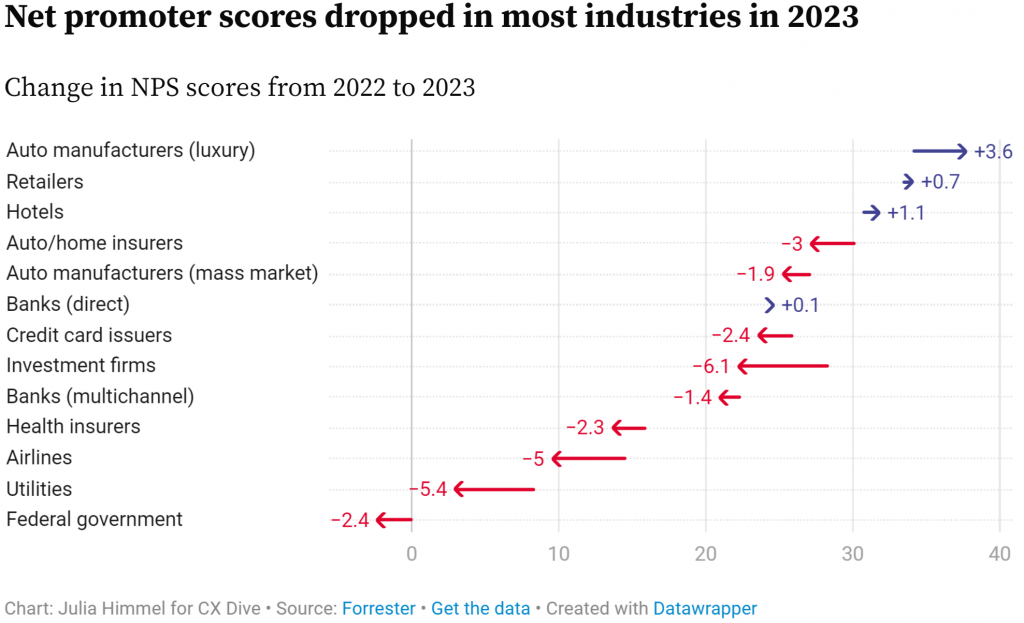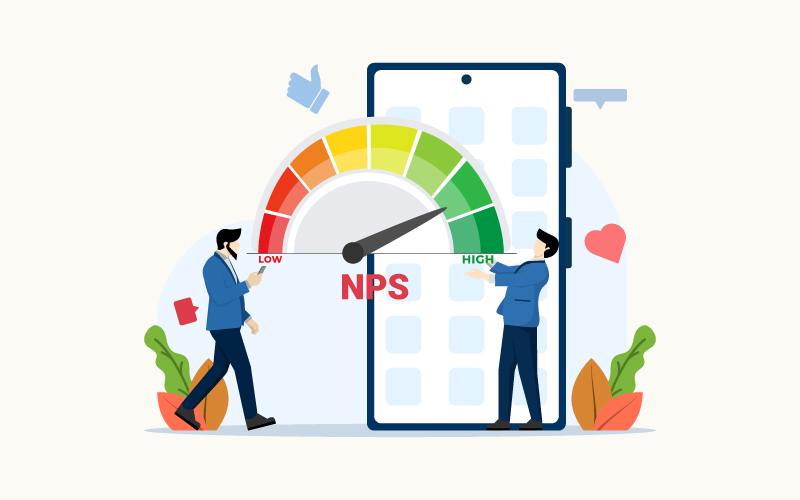There are several factors that businesses consider when calculating profitability. One aspect that companies cannot afford to forgo is customer loyalty, given the fact that customer acquisition cost (CAC) is always higher than the cost of retaining existing ones.
“Acquiring a new customer is anywhere from five to 25 times more expensive than retaining an existing one. It makes sense: you don’t have to spend time and resources going out and finding a new client — you just have to keep the one you have happy.”
Source
And the only way to retain a customer who has done business with you is ensuring that you are providing them with a top-notch customer experience.
What does a top-notch customer experience entail?
Let’s look at an example: A customer purchases a bag from a popular online retailer. The bag that is delivered is not of the same color as displayed in the image on the website. The customer reaches out to customer support and there are two possibilities
- An option to replace or return the item
- Unavailable/unresponsive customer support
To retain the customer and ensure they are loyal to the brand, it is a non-negotiable for companies to offer the first solution. It makes the customer feel valued and heard. The second alternative, on the other hand, can lead to customer frustration, a social media rant, and a bad brand image. Think about it, when asked to rate the service, which solution will be applauded and which one is bound to receive a scathing review?
To ensure your customer support team is performing well, the benchmark is satisfying customers and offering them the standard of service that they expect. This is where Net Promoter Score or NPS comes into play. One simple question gives you the answer to how a customer feels about your business:

Demystifying Net Promoter Score: A Simple Question, Powerful Results
This simple question has the potential to let businesses know if their product or services is received well by customers. A positive answer to this question also translates to the customers being willing to recommend the product or service to friends. Having established that loyalty is an important factor that plays into business success, let us understand how NPS is calculated and what the score means.
The Math Behind the Score: Categorizing Your Customers
When presented with the question, customers respond to the question by rating, on 0-10, how likely they are to recommend your brand to friends, colleagues or business associates. Their responses are categorized into three distinct groups based on their score:

- Promoters (9-10): These are your customer champions! Promoters are highly satisfied and enthusiastic, likely to recommend your business and generate positive word-of-mouth. They’re crucial brand advocates.
- Passives (7-8): These are the neutral customers, satisfied with your service but lacking enthusiasm. While they might not actively recommend you, they’re unlikely to switch to a competitor either.
- Detractors (0-6): These are the unhappy customers. Detractors are dissatisfied and more likely to share negative experiences with others, potentially damaging your reputation. Identifying and addressing their concerns is vital.
Calculating Your NPS
The first step to calculating the NPS score is identifying what percentage of the respondents are promoters, passives, and detractors. Then, the NPS, a single number between -100 and +100, is calculated using a straightforward formula:
NPS = % Promoters – % Detractors
To calculate your NPS, subtract the percentage of Detractors from the percentage of Promoters. A positive score indicates a customer base that’s more likely to recommend your business, while a negative score suggests a need for improvement.
What is a Good NPS?
There’s no single perfect score, but NPS provides valuable insights about how a customer feels about your brand and its services. A score above 70 is excellent, indicating a passionate customer base likely to recommend your brand.
Scores between 50 and 69 suggest a generally satisfied base, but there’s room for improvement to cultivate stronger loyalty. Scores below 50 highlight potential dissatisfaction. In this case, gathering feedback and addressing customer concerns is crucial to improve the experience and turn them into loyal promoters.
Let’s look at an example:
Imagine surveying 200 customers and receiving the following responses:
- Promoters (9-10): 50 respondents (25%)
- Passives (7-8): 40 respondents (20%)
- Detractors (0-6): 110 respondents (55%)
NPS Calculation: We only consider Promoters and Detractors for the NPS score.
NPS = 25% (Promoters) – 55% (Detractors) = -30
Interpretation: A score of -30 indicates a need for improvement. The high number of Detractors (55%) suggests customer dissatisfaction. While Passives (20%) aren’t included in the NPS calculation itself, they represent an opportunity to identify areas for enhancing the customer experience and potentially convert them into Promoters.
Going Beyond the Score: Taking Action for Customer Service Excellence
Remember, NPS is just one piece of the puzzle. Use it in conjunction with other customer feedback methods like surveys and open-ended questions to gain a more comprehensive understanding of customer experiences. The true power of NPS lies in using it to drive customer-centric action. Analyze your NPS data, identify areas for improvement, and implement changes to address customer concerns.
Here are some actionable steps:
1 . Close the Loop: Respond to all NPS feedback, thanking Promoters and addressing concerns raised by Passives and Detractors.
2. Empower Your Customer Service Team: Train your team members to actively listen and address customer concerns with empathy and professionalism.
3. Proactive Problem-Solving: Identify common pain points from NPS feedback and proactively implement solutions to address them before they escalate.
Why Net Promoter Score Matters to Customer Support Teams
“Net promoter scores, which measure customers’ loyalty by asking how likely they are to recommend a brand, dropped in 8 out of 13 industries, according to a Forrester survey.”
Source

A recent report shows that NPS scores have dropped across industries. Two factors explain why this happened: one, bad product, two, bad customer experience. NPS enables customer support teams to pinpoint the problem areas, helping businesses to identify and implement effective solutions.
A good NPS score can be achieved by following a simple mantra: create an excellent product, back it up with first-class customer service. To deliver top-notch service, your customer support team needs to truly understand and value the customers they interact with.
What better a tool to know if you are understanding your customers if not a simple question that directly reaches out to the customer?
Here is where NPS becomes a game-changer for customer support teams.
- Focus on Advocacy, Not Just Satisfaction: NPS goes beyond basic satisfaction to measure a crucial indicator of loyalty: the likelihood of recommendation. This laser focus on advocacy helps prioritize efforts to create loyal brand ambassadors.
- Actionable Insights for Improvement: NPS data provides valuable insights into customer sentiment. You can identify common pain points and frustrations mentioned in responses, allowing you to target specific areas for improvement.
- Benchmark Your Performance: Comparing your NPS score with industry benchmarks reveals how you stack up against competitors. This allows you to set realistic goals and track your progress over time.
The NPS Advantage: A Balanced Approach
The Net Promoter Score is a valuable tool to know if your customers are satisfied with the product and service. A satisfied customer will be a loyal customer and has the highest chance of advocating for your product. If used correctly, that is, utilize the responses received as actionable insights and ensure to identify and meet customer needs, NPS can directly increase revenue.
The true power of NPS lies not just in the number itself, but in its ability to guide your customer service strategy. By focusing on improving your NPS, you’re prioritizing customer relationships and building brand loyalty – the cornerstones of sustainable business growth in today’s competitive environment.
So, transform customer feedback into actionable insights with Kapture, and embark on your journey to becoming a customer service champion. Remember, happy customers are more than just a metric; they’re the key to unlocking long-term success.








